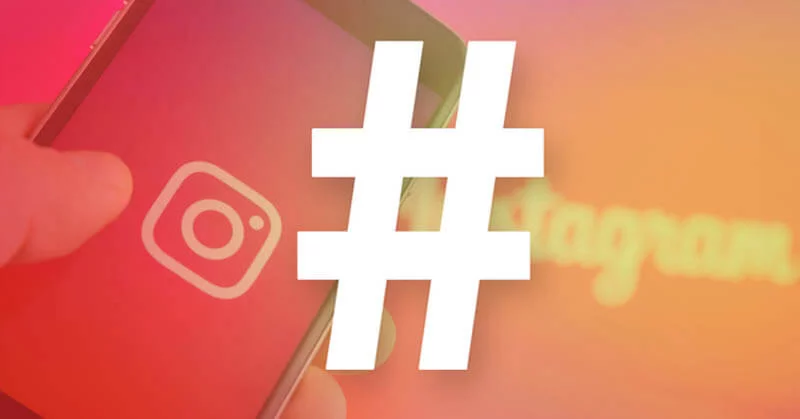Hashtags - we know them from Twitter and Instagram. We use them every day, but do we use them effectively and correctly?
There are strange examples of hashtag use (often incorrect). In addition, hashtags have long been outside of Twitter. At the moment, they are very common on Instagram, and the site itself offers many opportunities to use them.
Skillful handling of hashtags will not only allow us to easily establish a conversation with recipients, but also help us acquire new subscribers or traffic to our profile.
What are hashtags?
Hashtags are words or short phrases preceded by #. In social media, this is a "link" - however, it is not a link in the full sense of the word. Hashtags work because they link to any discussions or materials labeled with a specific hashtag within the chosen social platform. What does this mean? For example:
- Enter Twitter with the search tab #darthvader and you'll find all messages and discussions on Twitter that mention this character. Of course, you can narrow your search with filters
- Log in to Instagram using the #starwars search engine, click on the Tags tab, and you will see all Instagram posts where users have used the #starwars hashtag. At the top, on the left, in a distinctive circle, you will find Insta Stories to which this hashtag has been added.
Where did hashtags come from?
A lot of people think that hashtags were created thanks to Twitter. They appeared on this platform in 2007. It was a Google employee, Chris Messina, who suggested organizing conversations using the symbol #, preceding the topic of conversation.
Many Twitter users liked his suggestion, so they started using the idea for group discussions on Twitter. Now hashtags have become a natural part of communication not only on Twitter but also on Instagram. Despite this, their history actually comes from... iRC, where they were used to label channels.
Hashtags are now popular on Instagram, but they can also be found on Facebook or Linkedin.

Hashtags and their types
You don't need to be a big company or a social media specialist to create your own hashtags. Everyone can create their own #hashtag. When you look at hashtags in news feeds, you can easily see that they differ from each other in some way.
Here are examples of hashtags:
- hashtag content - reflect their original function and are used for group conversations on specific topics (e.g., #kawa #selfie #girl)
- local hashtags- allow you to find content related to selected locations. It is useful when, for example, you are traveling to a new city or on vacation and want to check what it looks like through the eyes of an Instagrammer, for example, #sanfrancisco #NY #singapore
- product hashtags- which would mean entries for photos or conversations about specific items, for example, #macbook #iphone #pixel
- company hashtags- Hashtags created to promote specific brands and their activities on the Internet, for example, #apple #google #lexus
- Hashtags for marketing and social campaigns- designed for such an action. An example is the hashtag#teampixel, which is used to describe photos taken with a Google Pixel phone. The campaign was aimed at conveying the message that this equipment allows you to take really good photos anywhere.
How to create hashtags?
Hashtags are created in a trivial way - just add the phrase after the # stamp you want to change into a hashtag. Despite this, we often come across hashtags (or rather, attempts to create them) that have errors that prevent them from being used correctly. What should you keep in mind when creating hashtags?
- Do not separate # the phrase you want to create a hashtag with a space!Separating these two elements with a space will make the hashtag simply inactive:
- #GoodHashtag- OK. # Invalid hashtag - WRONG
- For long hashtags consisting of several words, start each word with a capital letter. It's simply a matter of the readability of the tag. If it's a two-part hashtag (e.g. #sanfrancisco), you can still see the capital letters because the hashtag is legible. # GeekCatTeam - GOOD # geekcatteam - WRONG
Hashtags and underlines - yes or no?
Hashtags usually do not use underscores. For this reason, in complex hashtags, a capital letter is added at the beginning of each word to avoid using additional characters to separate them. This is unnecessary.
Remember that hashtags were largely shaped by Twitter, where until very recently there was a fairly strict limit of one post per hashtag. This forced the creation of short tags, and capitalizing words to form a longer hashtag was simply more practical than doing so with underscores, which used up extra characters in such a limited limit.
In our opinion, these habits still work. We often find hashtags in two versions - with and without underscores (for example, #ukrainegirl and #ukraine_girl), and the underscored version is often much more popular.

Hashtags - where and how to use them?
When it comes to hashtags, we naturally have two platforms - Twitter and Instagram. We won't write too much about Twitter - you have a short story above. We use them in tweets, and they are one of the most important elements of communication in this environment. However, when it comes to Instagram, there are a few things to highlight. Instagram allows us to add hashtags in several places:
- in messages
- Profile (bio)
- in Insta Story
Hashtags on Instagram
No. 1 hashtag in Insta Story. If you search for information on Instagram using a hashtag, you will find photos in the search results, and in the top section in the white box, you will see the search hashtag from the "Follow" CTA. On the left, you'll see a distinctive circle with stories containing this particular hashtag.
No. 2 hashtag in the profile- they were intended to serve an informational function. After clicking on such a hashtag in a profile, we simply go to the publications marked with this hashtag. Unfortunately, there are no tabs (at least not yet) with profiles tagged with #. Similarly, you can tag other profiles in your bio (using @). Then the person tagged in the bio profile receives notifications and can approve or reject it (if he or she rejects it, the "link" in our bio is simply inactive).
No. 3 Hahtags in publications- A lot has already been said. The most important thing to keep in mind when using hashtags on Instagram:
- you can use up to 30 hashtags in your post- Instagram has introduced a restriction that simply does not allow you to use more tags. If you add more than 30 hashtags to a post, none of them will appear in the description after the post is published.
- optimal number of hashtags in the post ranges from 11 to 15, but we suggest you just experiment with the number and see what works best for you. Test, test and test some more
- use hashtags that are relevant to the specific publication- that is, related to what the photo and description content represent. No one likes spammy tags! Instagram puts a lot of emphasis on the relevance of photos and hashtags. If you add hashtags to your photos that do not reflect what is in the photo, you risk that your photo will go unnoticed among what should actually be reflected in the hashtag
- hashtags should not be too long- you have to choose the maximum size of hashtags for yourself: the size of your account and the level of engagement. So you may find that your maximum threshold is 250,000 and it could be a million - who knows, you should check it out. To check, turn on your Instagram business profile to have access to traffic analytics under the photos - and test. It's worth mixing up hahstags - large (i.e., say, several hundred thousand posts) with smaller (tens of thousands of posts) and even micro (from several to several tens of thousands of posts, in the case of small Instagram accounts) and checking what gives us the best results
- do not use the same hashtags - Instagram doesn't like copy-and-paste posts. Be sure to try a different set under each photo
- watch out for prohibited hashtags- some hashtags are "banned" on Instagram when, for example, they deal with eroticism, pornography, topics that contradict the rules of the Instagram community, etc. What does this mean in practice? If you mark a photo with such a banned #, it will not be displayed with this hashtag, as well as under the hashtags you put in the description.
Hashtags on Facebook - do you use them or not?
Hashtags are mainly used on Twitter and Instagram, so we don't see the point of using them on other platforms. Hashtags on Twitter and Instagram are a natural element of communication. Search engines and filtering work very well on these social networks, which allows us to find the right topic quickly and easily. Here, hashtags play the role of an assistant not only in searching for messages, but also in reaching a wide audience.
In our opinion, using them on Facebook is a bit silly. Why? First of all, the Facebook search engine itself does not work very well when searching for content marked with certain hashtags. This directly leads to a decrease in the visibility of posts in which they were used.
If you are considering using hashtags on Facebook, we would suggest adding them, for example, to promote events or campaigns, only as a support (hoping that someone will find your hashtag in the Facebook search engine). However, remember that their number is limited to a maximum of two per post. And most importantly, check what you write.

Hashtags - how to use them?
- Use hashtags to start a conversation - Hashtags, by the way, are designed to help users of social media sites find topics and comments for discussions, continue. Use them to start a conversation with people who follow a topic close to your heart.
- Remember the right number of hashtags in your post - too many, not healthy. While Twitter users prefer to use several hashtags in one post, Instagram users prefer even more. However, keep in mind the limit - you can use up to 30 hashtags in an Instagram post - if you enter more, they simply won't appear after the photo is published.
- Use them wisely- not spam!
- Remember to use only hashtags that are relevant to the content of your post - Adding popular and frequently searched hashtags is appealing, but it's certainly not welcomed by your recipients. If you upload a photo of your book to Instagram, add relevant hashtags. #Selfie #girl #fproofn #ootd, although very popular, can irritate people who are looking for this type of photo when they come across your photo book.
Hashtags - how to use them?
- Don't create hashtags that are too long - an entire sentence turned into a hashtag will be difficult to remember and hard to read. Social media loves short, specific and precise hashtags.
- Do not add inappropriate hashtags to collect statistics. Of course, hashtags used in this way are not prohibited, but they are certainly not encouraged.
- Do not use symbols- any punctuation or symbols added to the hashtag (of course, except for # at the beginning) will not be included. As a result, only the preceding phrase will be a hashtag. Therefore, if you add hashtags to your posts, avoid all hashtag characters, such as: +, @, &.









